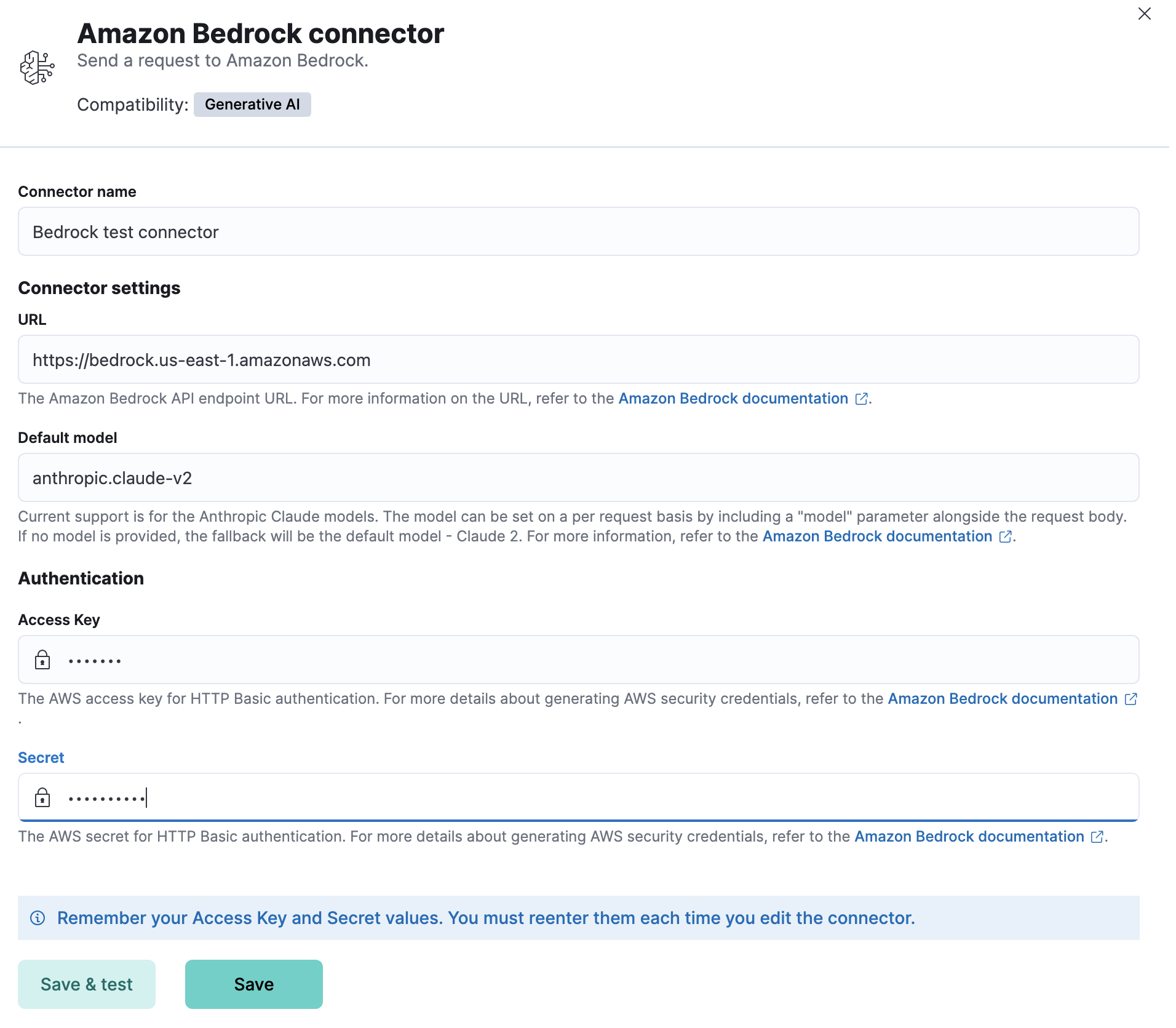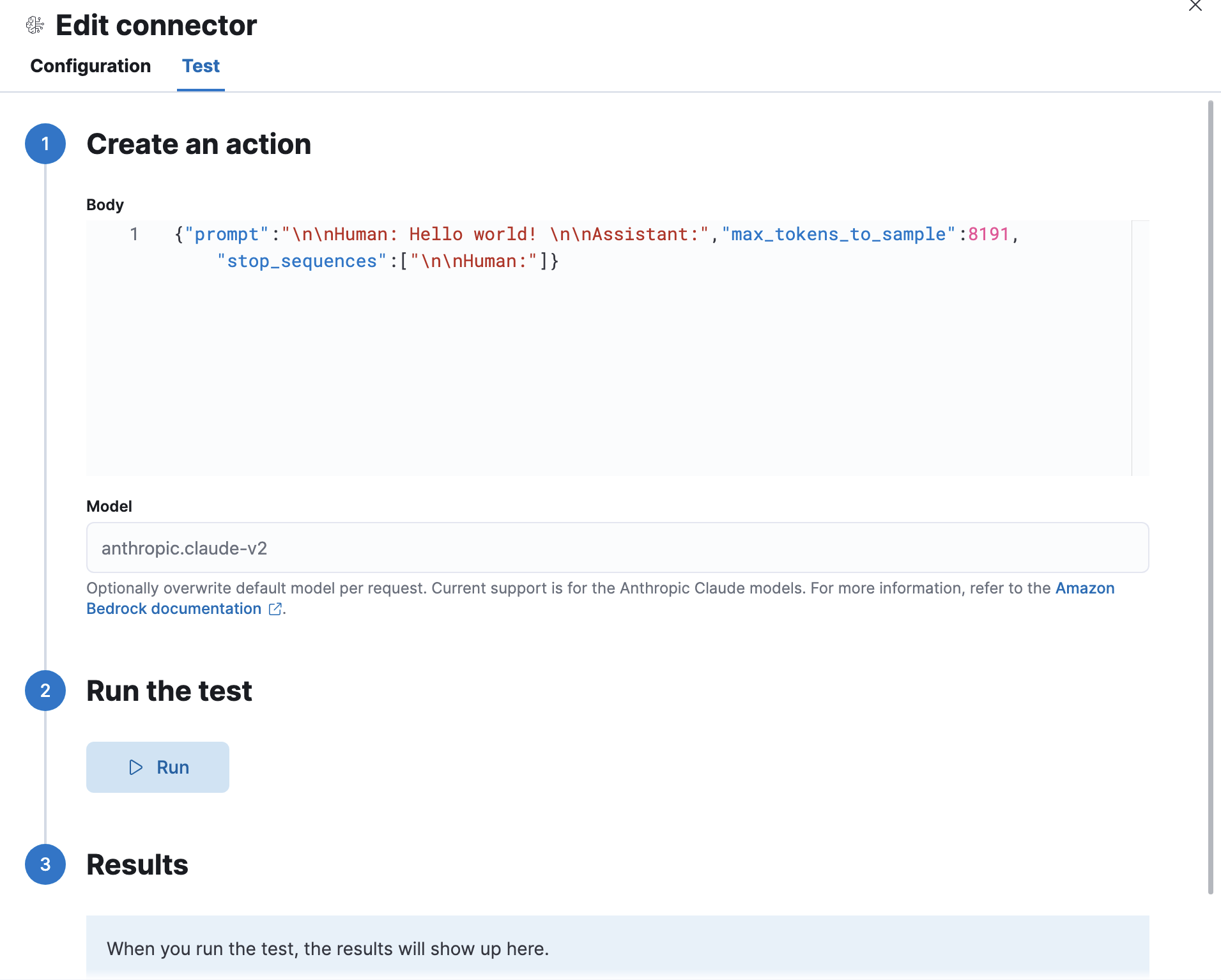Amazon Bedrock connector and action
editAmazon Bedrock connector and action
editThe Amazon Bedrock connector uses axios to send a POST request to Amazon Bedrock. The connector uses the run connector API to send the request.
Create connectors in Kibana
editYou can create connectors in Stack Management > Connectors. For example:

Connector configuration
editAmazon Bedrock connectors have the following configuration properties:
- Name
- The name of the connector.
- API URL
- The Amazon Bedrock request URL.
- Default model
- The GAI model for Amazon Bedrock to use. Current support is for the Anthropic Claude models, defaulting to Claude 2. The model can be set on a per request basis by including a "model" parameter alongside the request body.
- Access Key
- The AWS access key for authentication.
- Secret
- The secret for authentication.
Test connectors
editYou can test connectors with the run connector API or as you’re creating or editing the connector in Kibana. For example:

The Amazon Bedrock actions have the following configuration properties.
- Body
-
A stringified JSON payload sent to the Amazon Bedrock Invoke Model API URL. For example:
{ body: JSON.stringify({ prompt: `${combinedMessages} \n\nAssistant:`, max_tokens_to_sample: 300, stop_sequences: ['\n\nHuman:'] }) } - Model
- An optional string that will overwrite the connector’s default model. For
Connector networking configuration
editUse the Action configuration settings to customize connector networking configurations, such as proxies, certificates, or TLS settings. You can set configurations that apply to all your connectors or use xpack.actions.customHostSettings to set per-host configurations.